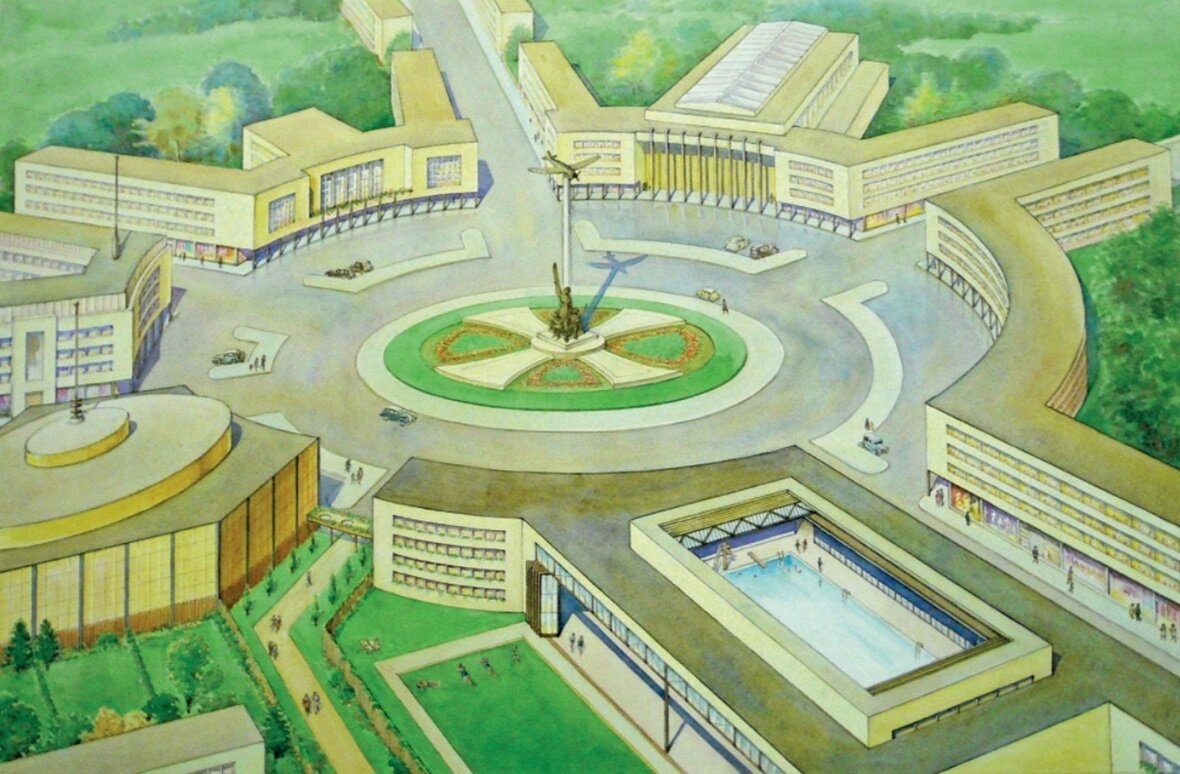How will housing design and placemaking be changed by Covid-19?
Read the AJ Article Here, or below.
The current pandemic could be the driver for new approaches to how we build in a post-coronavirus world, says Tara Gbolade
Modern architecture was offered to the world after the shock of the First World War. Garden cities brought about a change in cramped and unsanitary living, addressing the spread of disease and replacing slums with higher-quality housing, including generous play spaces for children.
Currently, we are adapting to working on dining room tables with TVs acting as second screens for Zoom meetings. Parents are finding new ways of entertaining children in flats with no decent amenity space, all the while stoically trying to hold video meetings and dissuade their children from clamouring.
While as a society we didn’t plan this, and are trying our best to adapt to it, could now be the time to rethink housing design and placemaking in new developments? What role will sustainability play? And what impacts on our health and wellbeing will our ‘new normal’ have? Could our current pandemic be the driver for new housing in a post-Covid-19 world?
Design and placemaking We are aware of the profound impact our surroundings have on our health and wellbeing. Our future homes will need to provide purpose-built home-office spaces, where we have access to good-quality natural light throughout the day and better soundproofing between walls (and traffic).
Developers will need to rethink development models and incorporate commercial spaces in buildings or within a 10 to 15-minute walk or cycle ride from most homes.
Planning applications, which often have the obligatory ‘amenity space’ illustrated on drawings, will now need to demonstrate usability – in contrast to what is commonly in reality a leftover space that remains in the shade throughout the day, facing car-dominated secondary roads and lacking a safe enclosure.
New communities with strong placemaking principles like walkability to local social infrastructure such as shops – which actually stimulate economic growth – will need to be prioritised, as working from home means we’ll probably make these trips more regularly.
Sustainability We are almost tired of hearing we need to implement fabric-first energy-efficient standards such as Passivhaus, but this requirement is pertinent – now more so than ever.
When we adapt to a society that spends more time at home during the working week, beyond ensuring our carbon emissions are vastly reduced (embodied and operational energy), we must seriously consider the reality of fuel poverty as our energy prices continue to rise, even as society decarbonises and weather patterns become more precarious.
Social value While most of us are getting accustomed to speaking to family over Skype, doing yoga with friends on Zoom, or spending Friday night in virtual pubs, we are also missing physically being with each other.
This is the new normal: that as we spend less time being in the same room as work colleagues, we will look to find connection in our immediate communities. New community strength will come from our ability to foster local networks in shared spaces and engage in collective activities that help us develop our sense of belonging and community identity.
We know that the integration of formal and informal amenities including green infrastructure promote good mental and physical health. However, we must not underestimate the importance of embedding these spaces, and good long-term stewardship models, to create communities that flourish and become resilient in the decades to come.
We are on the precipice of a huge change post Covid-19. While many companies have had to pause developments and construction, our future is dependent on our ability to rethink how this pandemic will change future developments.
How will we respond to the new demands that will come from a generation looking to make their lives, homes and communities, future-ready? Our ability to adapt to this change will determine how we thrive in the decades to come.
Lead image: A drawing for an unknown roundabout and related development in Birmingham as part of nationwide reconsiderations of how our built environment could and should look, following WWII.
Source: Birmingham Museum and Art Gallery



